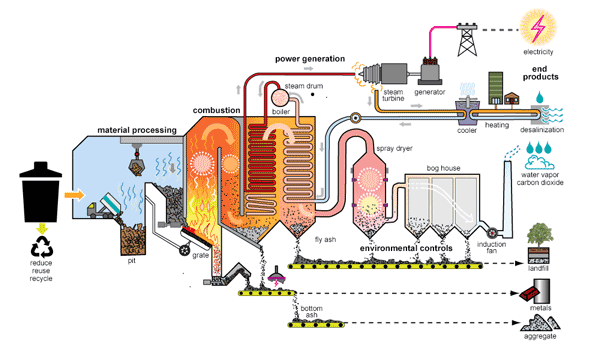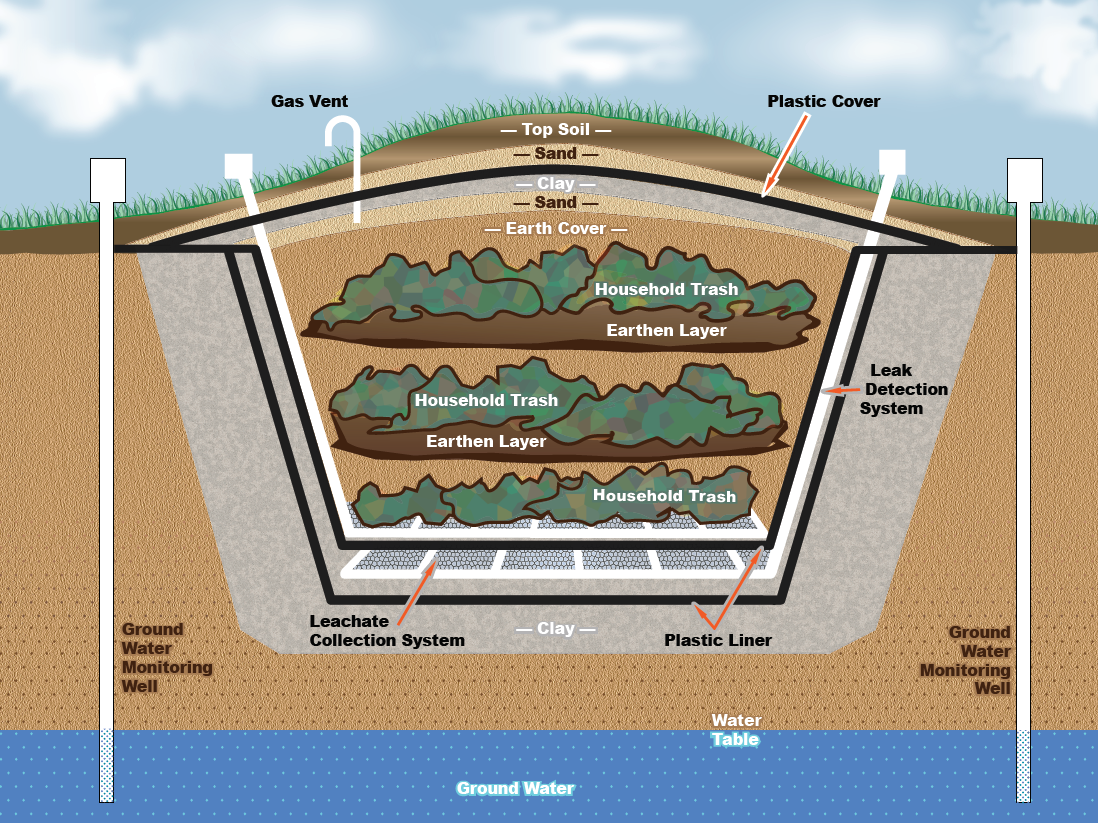For my final civic issues blog, I will add a final part on my sustainability series. I have covered energy sources and modes of transportation, and for my third installment I would like to take a look into waste management and disposal. Obviously we all produce excess waste in some ways, but do you ever think about where it all goes? The main destinations for waste include recycling or compost, waste-to-energy facilities, and landfills (https://www.texasdisposal.com/blog/where-does-trash-go/). These systems may sound obvious and seem like common sense, but a lot of them are more complex than most people know. Recycling is not as easy and common as many people believe, and landfills have a much more intricate design than just an empty pit to dump stuff in.
I would first like to dive a little deeper into our recycling system and compost, but mostly focus on recycling since that system is a lot more complex and varying. I think most people can see how composting is better for the environment than landfills since it gets broken down and turned into soil or other natural materials. There are many different types of recyclable items including paper, glass, metal, plastic, and more. These all have different processes to be recycled and need to be sorted in order to be truly recycled. Just because something gets put into a recycling bin and gets picked up to go to a center, does not mean it is going to get recycled and turned into something new. A lot of waste must be clean and properly organized in order to even make it to a recycling facility. This means a lot of waste just ends up in a landfill anyways, but once the actual recyclable materials are sorted, they get sold to different manufacturers depending on the materials where they hopefully get turned into something else (https://brightly.eco/blog/recycling-process). As mentioned, the different materials also have different abilities to be recycled. When thinking of recycling, most people think of plastic first, since it is one of the most common materials around us, but it is actually pretty difficult to recycle. The most recyclable material over all is steel, but aluminum cans are second as they are actually 100% recyclable (https://www.acorecycling.com/blog/what-are-the-most-recyclable-materials/). They are one of the few materials that can actually be recycled multiple times, while plastic can normally only be recycled once and normally get turned into much weaker, flimsier plastic. Next is PET plastic bottles, followed by newspaper, and then glass (https://www.acorecycling.com/blog/what-are-the-most-recyclable-materials/). I do not want to discourage recycling in any way, but I must state that the best way to truly decrease landfill waste and pollution is to reduce the production and use of these materials overall. After all, according to NPR, only around 5% of plastic actually gets recycled. This is likely because a lot of plastic can not be recycled if it does not match a certain shape requirement like a jug or bottle with a skinny opening or is not a specific number of plastic like a 1 or 2 (https://www.npr.org/2022/10/24/1131131088/recycling-plastic-is-practically-impossible-and-the-problem-is-getting-worse).

(https://vvdisposal.com/services-pricing/recycling/plastic-types/)
Even though many people throw anything they think can be recycled into their bin, a lot of it just gets thrown out at the facility anyways and can even cause more damage because it can cause the whole load to just get thrown out to avoid the trouble of sorting out so much trash. This is why proper recycling education is needed so people can actually recycle properly and avoid making matters worse.

(https://www.drugplastics.com/an-introduction-to-advanced-plastic-recycling/)
Waste-to-energy plants are another waste management option, but I won’t get into them too much because they are not as common as other methods so I won’t waste time and space talking about them. There are a couple different ways this can be done, but the most common is burning waste to produce steam that can be used to generate energy. It is not an awful method, but it does produce a lot of air pollution and can have some negative effects on the environment. I do not think it is the best way to dispose of waste especially since we have many other, more sustainable, ways to generate energy that I mentioned in my previous blog post, but it is an option to be aware of.

(https://www.eia.gov/energyexplained/biomass/waste-to-energy-in-depth.php)
Now for the most obvious and most common method, we have landfills. While landfills may just seem like big pits or areas to dump garbage, there is actually a lot more thought behind them. All regulated landfills have a generic structure and design that varies slightly. This normally includes a thick, non-permeable liner like clay covered with a flexible membrane (https://www.sciencelearn.org.nz/resources/2941-structure-of-landfills). There are then collection systems that contain and get rid of leachate, which is water that has been contaminated by the waste and contains chemicals and other constitutes that can be dangerous to humans (https://www.epa.gov/landfills/municipal-solid-waste-landfills). The garbage is then dumped into the pit and covered regularly with different layers of dirt, stones, and clay. There are also gas vents to release methane gas that builds up from some of the compostable waste, which is sometimes used to capture energy. When the pit is completely full, it will be sealed off with clay, sand, and topsoil to keep all the trash in.

(https://www.in.gov/idem/iee/classroom-lesson-plans-and-resources/where-trash-goes/student-page/)
Overall, landfills are pretty effective and are definitely much better regulated and safer than they used to be, but they still pose some issues. They can release toxic gases and mostly affect poor income neighborhoods that they often get placed near. Not to mention they take up a lot of land space and if humans keep producing as much waste as they do now at the same rate, eventually we are going to run out of places to put it. I want people to consider how much waste is produced and how we can deal with it in the best way for everyone. It can be overwhelming when you realize how much waste you produce yourself weekly. If I could, I would challenge everyone to keep all their personal garbage for a week to see how much they really make. Personally, I think the main problem lies in big corporations that manufacture items that can not be reused or recycled easily and must end up in a landfill. Fast fashion and large industries cause a lot of excess waste and I believe if we really want to cut down on our impact on the environment, we need to cut down on our waste in general, which means producing and manufacturing more sustainable products.
